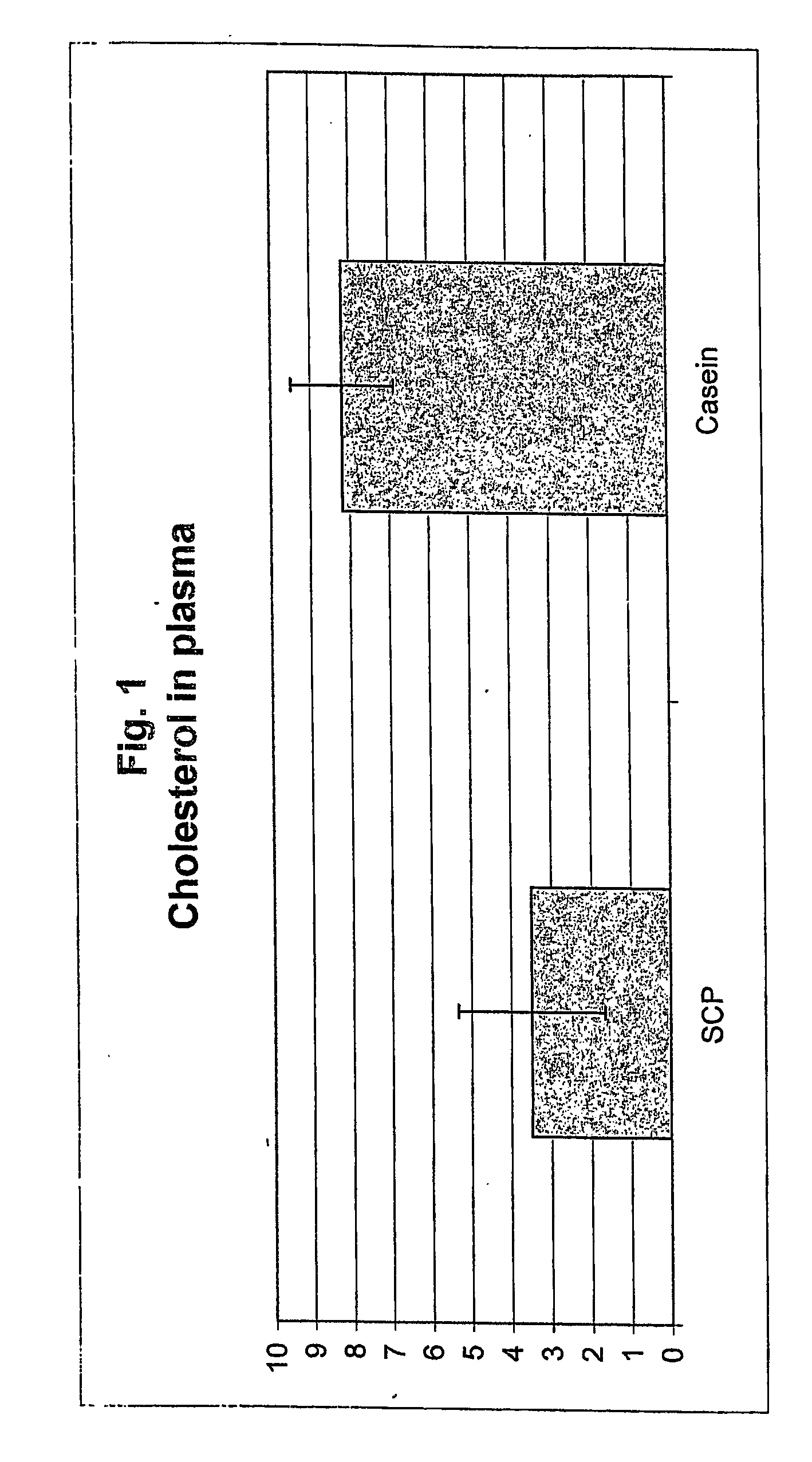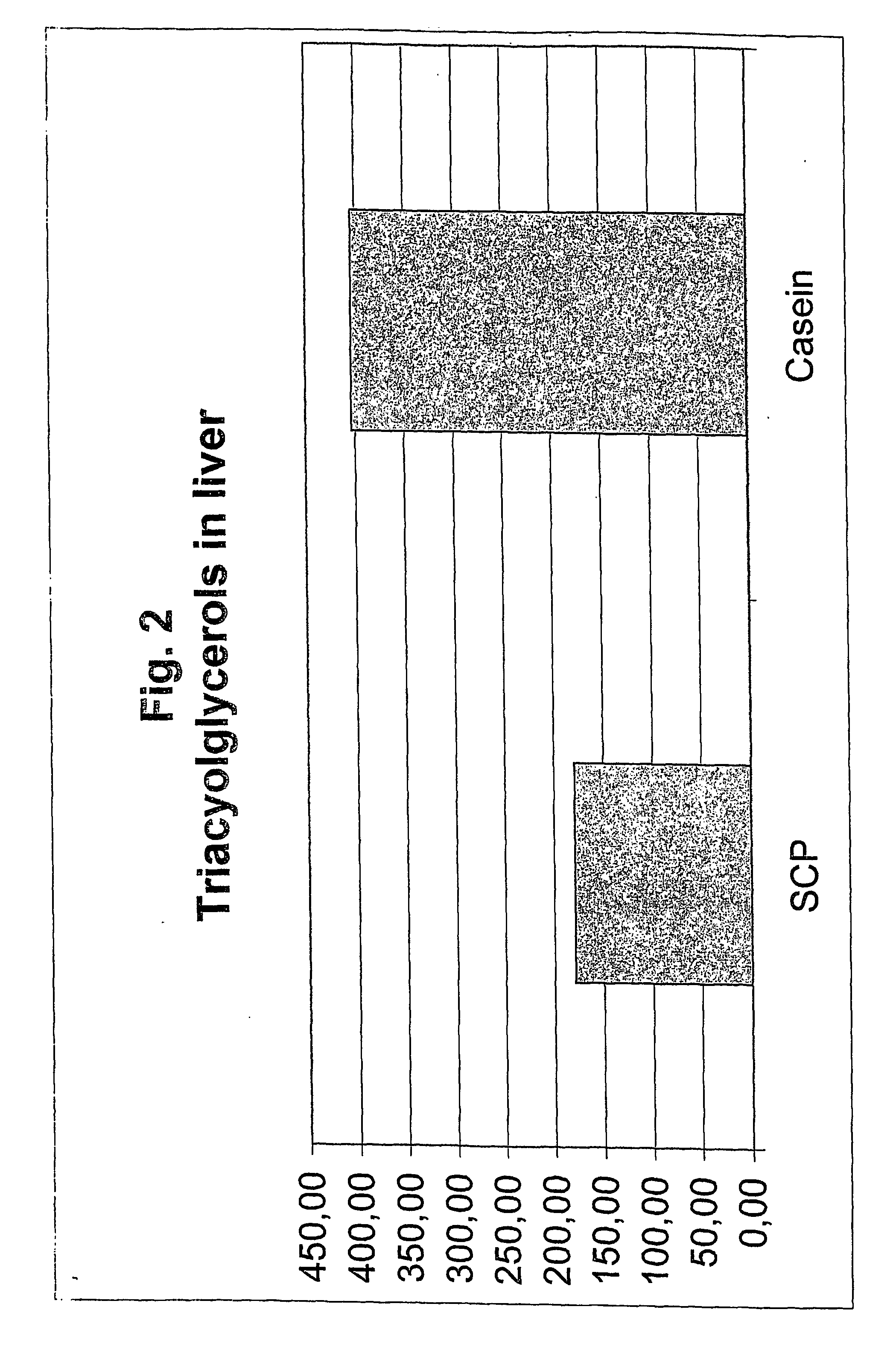Use of a single-cell protein material
- Summary
- Abstract
- Description
- Claims
- Application Information
AI Technical Summary
Benefits of technology
Problems solved by technology
Method used
Image
Examples
example 1
Preparation of Single-Cell Protein (SCP) Material
[0067] A microbial culture comprising Methylococcus capsulatus (Bath), Ralstonia sp., Brevibacillus agri and Aneurinibacillus sp, all commercially available from Norferm Danmark AS, Odense, Denmark is produced in a loop-type fermentor by continuous aerobic fermentation of natural gas in an ammonium / mineral salts medium (AMS) at 45 C, pH 6.5, and at a dilution rate of 0.15 −1. The AMS medium contains the following per litre: 10 mg NH3, 75 mg H3PO4.2H2O, 380 mg MgSO4.7H2O, 100 mg CaCl2.2H2O, 200 mg K2SO4, 75 mg FeSO4.7H2O, 1.0 mg CuSO4.5H2O, 0.96 mg ZnSO4.7H2O, 120 μg CoCl2.6H2O, 48 μg MnCl2.4H2O, 36 μg H3BO3, 24 μg NiCl2.6H2O and 1.20 μg NaMoO4.2H2O.
[0068] The fermentor is filled with water which has been heat-sterilized at 125° C. for 10 secs. Addition of the different nutrients is regulated according to their consumption. Continuous fermentation is operated with 2-3% biomass (on a dry weight basis).
[0069] A single-cell material h...
example 2
SCP lowers the Concentration of Plasma Cholesterol
[0071] Obese Zucker rats were offered a diet containing 20% SCP as the sole source of protein. The SCP is produced as described in example 1, above.
[0072] The plasma cholesterol level were reduced by 57% in Zucker rats fed SCP, as compared to rats fed casein as the feed protein. The result is shown in FIG. 1. The result clearly demonstrates that the SCP decreases the levels of cholesterol in the plasma and can be used as a cholesterol lowering agent.
example 3
SCP Decreases the Concentration of Triacylglycerols in the Liver
[0073]FIG. 2 shows that SCP induces a lowering of the concentration of triacylglycerols (TG) in the liver of about 50%. This indicates that the compound of the present invention can be used as a lipid lowering agent, and for the treatment and prevention of fatty liver.
PUM
| Property | Measurement | Unit |
|---|---|---|
| Temperature | aaaaa | aaaaa |
| Fraction | aaaaa | aaaaa |
| Mass | aaaaa | aaaaa |
Abstract
Description
Claims
Application Information
 Login to View More
Login to View More - R&D
- Intellectual Property
- Life Sciences
- Materials
- Tech Scout
- Unparalleled Data Quality
- Higher Quality Content
- 60% Fewer Hallucinations
Browse by: Latest US Patents, China's latest patents, Technical Efficacy Thesaurus, Application Domain, Technology Topic, Popular Technical Reports.
© 2025 PatSnap. All rights reserved.Legal|Privacy policy|Modern Slavery Act Transparency Statement|Sitemap|About US| Contact US: help@patsnap.com



